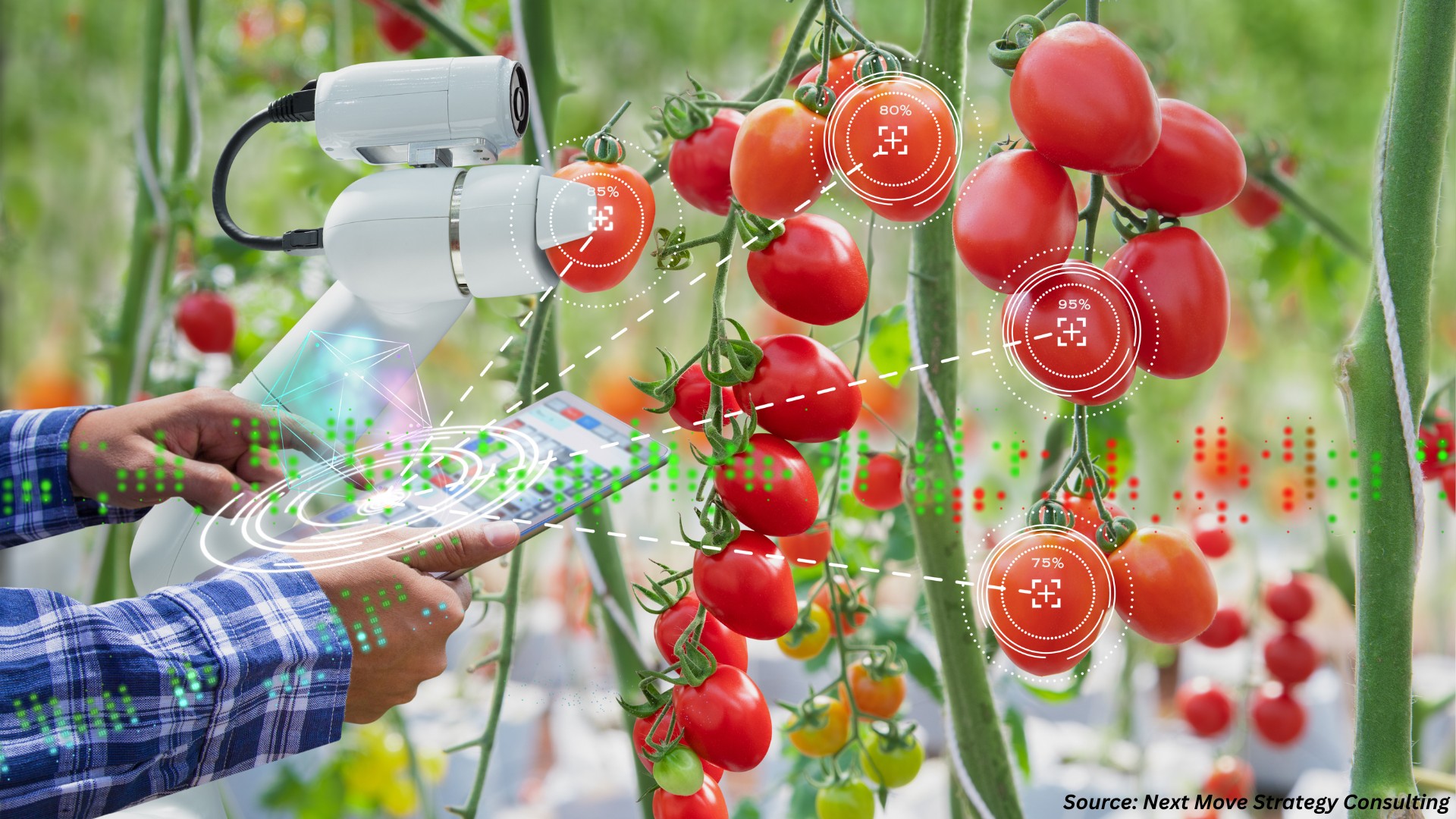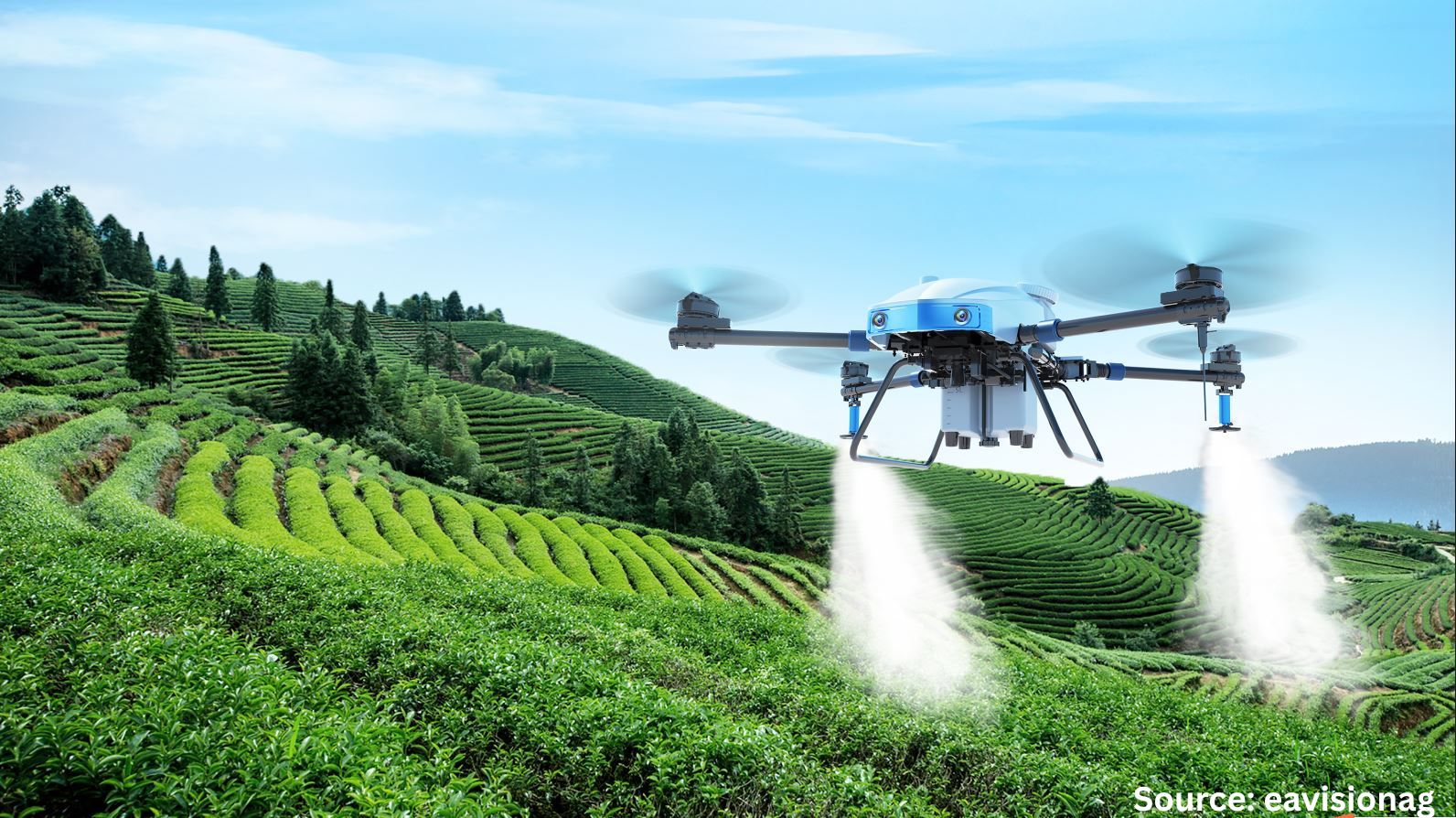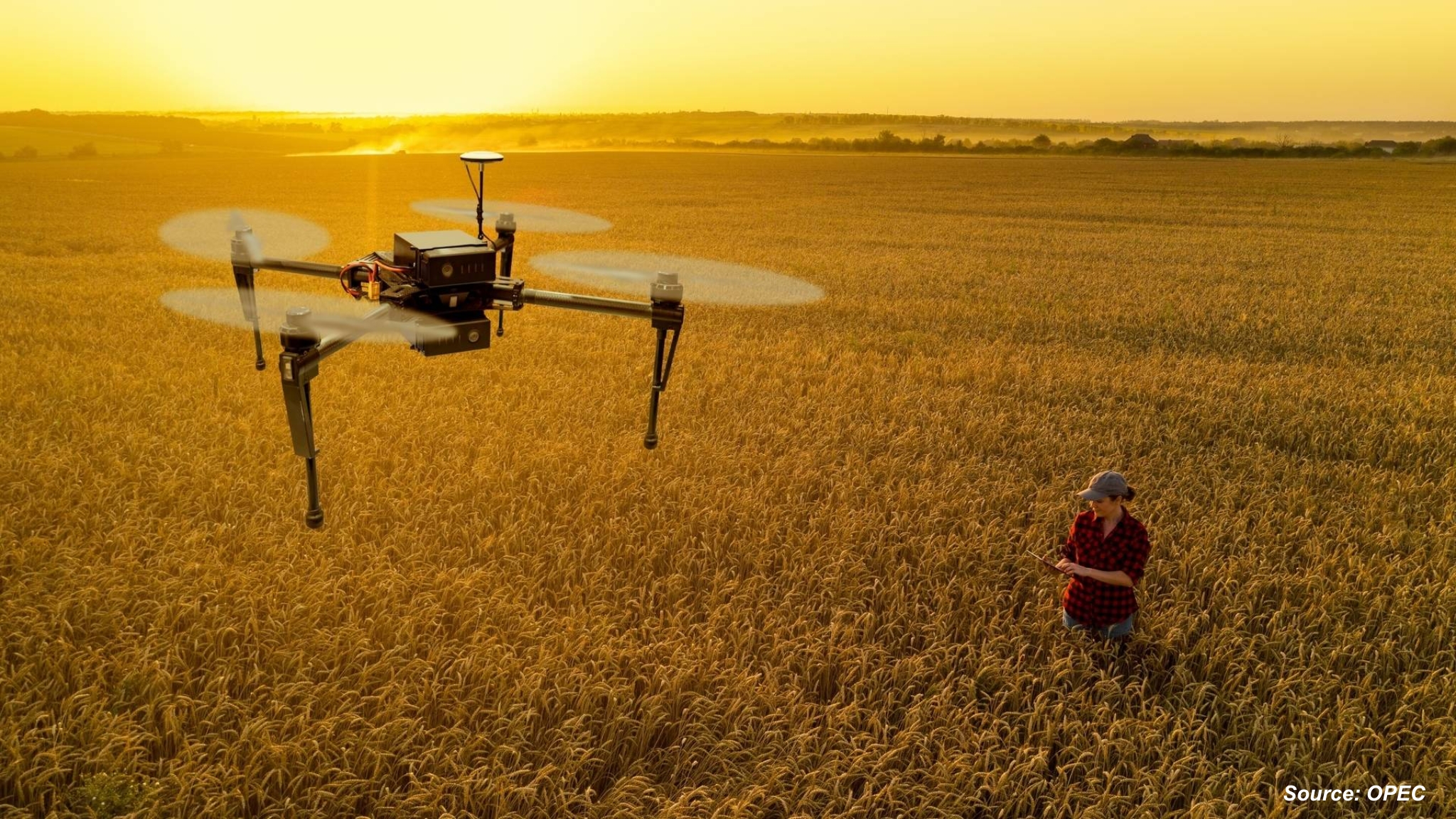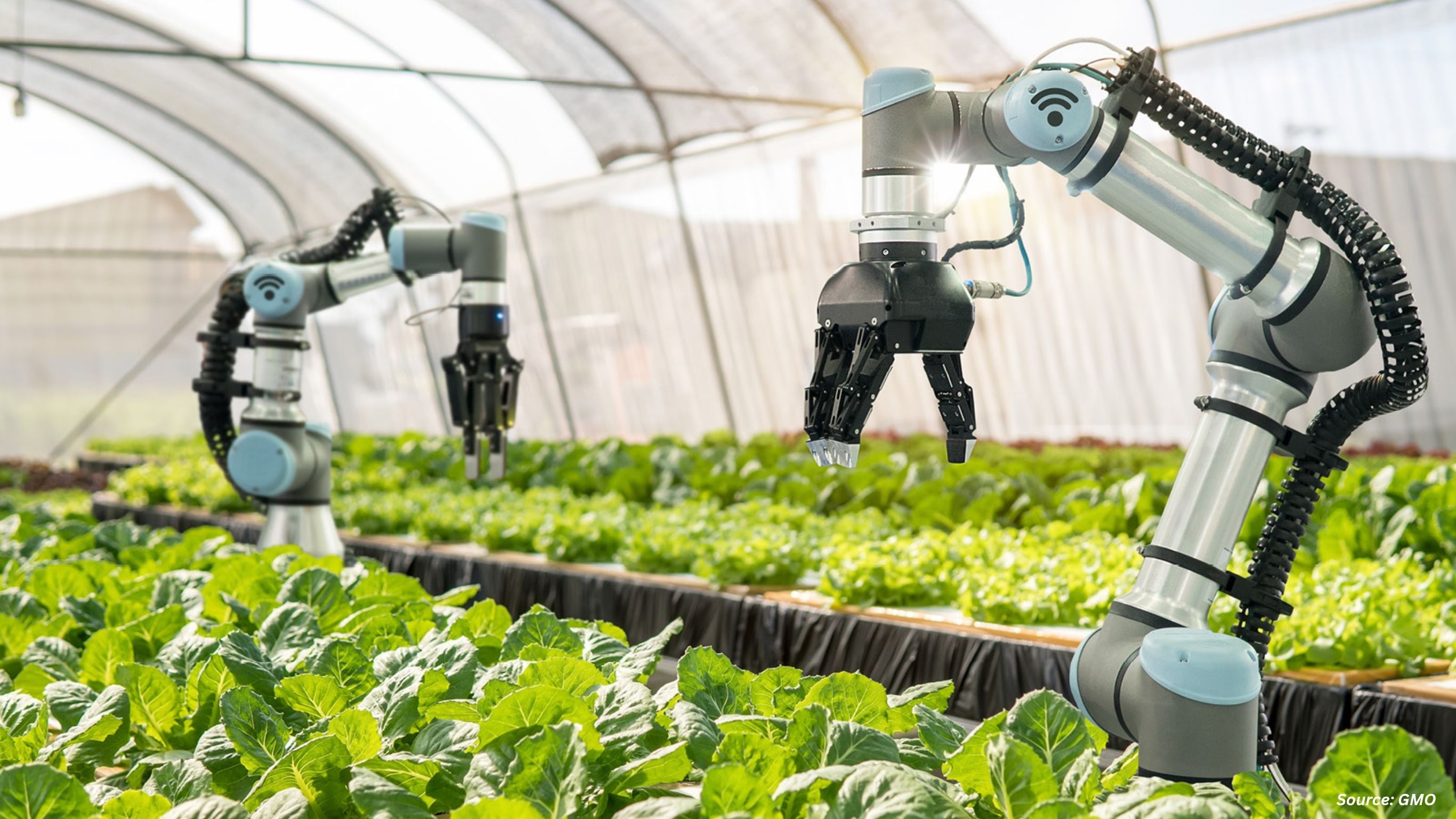How Smart Harvesting is Revolutionizing Agriculture: Market Trends, Key Players & Innovations
Published: 2025-09-10

The worldwide Smart Harvest Market is transforming agriculture, integrating advanced technologies like artificial intelligence (AI), Internet of Things (IoT), and robotics to enhance efficiency and sustainability. Valued at USD 17.41 billion in 2024, the market is projected to grow at a compound annual growth rate (CAGR) of 11.4% to reach USD 33.31 billion by 2030, driven by increasing global food demand and labour shortages.
This blog explores the leading players shaping this dynamic industry, highlighting their innovations and market impact throughout 2024 to 2030.
What Is Smart Harvesting?
Smart harvesting refers to the use of advanced technologies to optimize crop collection, reduce labor dependency, and improve yield quality. Technologies such as robotic harvesters, drones, and sensors enable data-driven decisions, enhancing precision and sustainability in agriculture. The market’s growth is fueled by government initiatives and technological advancements, particularly in North America, which dominates due to its robust infrastructure and investment in automation.
Key Market Drivers
-
Government Initiatives Fuel Market Expansion
-
Increased public funding accelerates adoption of smart harvesting.
-
Focus on food security and sustainability boosts market demand.
-
-
Tech Advancements Accelerate Adoption
-
IoT, AI & machine learning enable real-time data and precision harvesting.
-
Jan 2025: Hebrew University uses hyperspectral imaging to non-destructively assess tomato quality, improving timing & yield.
-
-
Rising Agricultural Output Necessitates Smart Harvesting
-
Higher yields strain traditional methods.
-
Market Restraint
-
High Costs Limit Adoption
-
Expensive setup, equipment, and maintenance.
-
Small-medium farmers face affordability issues.
-
Future Opportunities
-
Remote Sensing Integration Offers Growth Potential
-
Drones, sensors, and satellite imagery optimize yield prediction & resource use.
-
Dec 2024: Researchers from Brazil and Spain are utilizing sensors embedded in drones and agricultural machinery, together with satellite imagery, to determine the optimal harvest time, cut down CO₂ emissions, and optimize water usage in plantations.
-
Henceforth, smart harvesting integrates cutting-edge technology to address modern agricultural challenges, with significant growth expected through 2030.
Leading Players in the Smart Harvest Market
Several companies are at the forefront of the smart harvest market, leveraging innovation to drive productivity. Below is an analysis of key players based on their 2024 activities, sourced from company announcements and verified reports.
John Deere
John Deere, a global leader in agricultural machinery, is advancing smart harvesting through AI-powered automation. In February 2024, the company introduced the S7 Series Combines, featuring advanced harvesting automation and data-driven tools to boost crop yields. Additionally, at CES 2024, John Deere showcased an automated cotton-picking system that processes and bales RFID-tracked cotton, enhancing efficiency.
-
Innovation: S7 Combine with predictive analytics and automation.
-
Market Impact: Strengthens North America’s dominance in smart harvesting.
As such, John Deere leads with innovative automation, reinforcing its position as a market pioneer.
CNH Industrial
CNH Industrial, through its brands like Case IH, is a major player in smart harvesting. In November 2024, CNH launched the Axial-Flow 160 and 260 series, designed for efficient harvest, achieving higher yield & maximum profitability. These machines integrate advanced automation to optimize harvesting processes.
-
Innovation: Axial-Flow 160 Series with enhanced automation.
-
Market Impact: Expands smart harvesting solutions for large-scale farms.
CNH Industrial drives efficiency with its advanced combine technology, catering to large-scale agricultural needs.
Trimble Inc.
Trimble Inc. specializes in precision farming with advanced displays like GFX-1060 and GFX-1260, providing real-time field insights to streamline operations. Their GNSS-based solutions and software enhance productivity by enabling precise planting, spraying, and harvesting. Trimble’s tools integrate seamlessly with farm management systems, supporting data-driven decisions for sustainable agriculture. In 2024, Trimble enhanced its portfolio with advanced sensors and data analytics platforms, enabling real-time crop monitoring and yield optimization.
-
Innovation: Precision farming with advanced displays like GFX-1060 and GFX-1260.
-
Market Impact: Trimble’s tools integrate seamlessly with farm management systems, supporting data-driven decisions for sustainable agriculture.
Thus, Trimble’s focus on precision technology supports data-driven farming, boosting market growth.
AgroFresh
AgroFresh, a leader in post-harvest solutions, launched Harvista™ Mix in September 2024 to support U.S. growers with simplified ethylene management up to the day of harvest. The product extends the harvest window and enables optimal fruit size, color, and firmness—without requiring specialized equipment, helping improve operational flexibility.
-
Innovation: Harvista Mix for ethylene management.
-
Market Impact: Enhances fruit harvesting efficiency in North America.
AgroFresh, thus, strengthens smart harvesting with targeted post-harvest solutions.
DeLaval: DeLaval, a leader in dairy automation, continues to transform farm operations by integrating digital tools and automated systems to improve efficiency and animal well-being. Its VMS™ robotic milking systems exemplify this shift by enabling data-driven milking routines tailored to each cow's health and production data—ultimately enhancing longevity, comfort, and milk yield.
These key players contribute to a diverse market ecosystem, addressing various agricultural needs.
Market Share and Competitive Landscape
The smart harvest market is highly competitive, with North America leading due to technological adoption and infrastructure. The region holds the dominating share in the smart harvest market owing to widespread agriculture technologies, strong infrastructure, and heavy automation investments. Advances in smart harvesting solutions are backed by the presence of major tech companies and an emphasis on sustainable farming practices.
John Deere and CNH Industrial dominate due to their scale, while Trimble and AgroFresh excel in niche precision and post-harvest solutions.
Challenges and Opportunities
The smart harvest market faces challenges like high initial costs for equipment and maintenance, which can deter smallholder farmers. However, opportunities arise from growing technological innovation and government support, such as the World Bank’s initiatives for climate-smart agriculture. Climate change and food and nutrition insecurity pose two of the greatest development challenges of our time.
The World Bank has significantly scaled up its engagement and investment in climate-smart agriculture (CSA). In its Climate Change Action Plan (2021- 2025), the World Bank has identified Agriculture, Food, Water and Land as one of the five key transitions needed to tackle the Paris Agreement. It engages strategically with countries, supporting them to enhance productivity, improve resilience and reduce greenhouse gas emissions.
Next Steps for Stakeholders
To capitalize on the smart harvest industry growth, stakeholders can take the following actions:
|
Strategy |
Action Plan |
Example/Partner |
|
Invest in Automation |
Explore scalable harvesting solutions through strategic partnerships |
John Deere, CNH |
|
Leverage Govt Programs |
Participate in global funding and development programs focused on climate-smart agriculture |
World Bank’s Climate Change Action Plan |
|
Adopt Precision Tech |
Integrate IoT and GPS systems to improve operational efficiency |
Trimble |
|
Focus on Sustainability |
Use innovative solutions to enhance yield quality and minimize post-harvest losses |
AgroFresh |
|
Monitor Market Trends |
Track latest AI, robotics, and agri-tech trends via detailed market reports |
McKinsey, other consulting firms |
Strategic investments and partnerships can position stakeholders to thrive in the evolving smart harvest market.
About the Author
 Sneha Chakraborty is a seasoned SEO Executive and Content Writer with over 4 years of experience in the digital marketing space, bringing a strong command of online visibility strategies and a keen insight into the evolving digital landscape. She specializes in enhancing online visibility and user engagement through data-driven strategies and creative content solutions. Sneha is passionate about translating complex digital concepts into accessible content for a wide audience. Outside of work, she enjoys reading, sketching, and exploring the outdoors through nature photography.
Sneha Chakraborty is a seasoned SEO Executive and Content Writer with over 4 years of experience in the digital marketing space, bringing a strong command of online visibility strategies and a keen insight into the evolving digital landscape. She specializes in enhancing online visibility and user engagement through data-driven strategies and creative content solutions. Sneha is passionate about translating complex digital concepts into accessible content for a wide audience. Outside of work, she enjoys reading, sketching, and exploring the outdoors through nature photography.
About the Reviewer
 Sanyukta Deb is a seasoned Content Writer and Team Leader in Digital Marketing, known for her expertise in crafting online visibility strategies and navigating the dynamic digital landscape. With a flair for developing data-driven campaigns and producing compelling, audience-focused content, she helps brands elevate their presence and deepen user engagement. Beyond her professional endeavors, Sanyukta finds inspiration in creative projects and design pursuits.
Sanyukta Deb is a seasoned Content Writer and Team Leader in Digital Marketing, known for her expertise in crafting online visibility strategies and navigating the dynamic digital landscape. With a flair for developing data-driven campaigns and producing compelling, audience-focused content, she helps brands elevate their presence and deepen user engagement. Beyond her professional endeavors, Sanyukta finds inspiration in creative projects and design pursuits.
















Add Comment